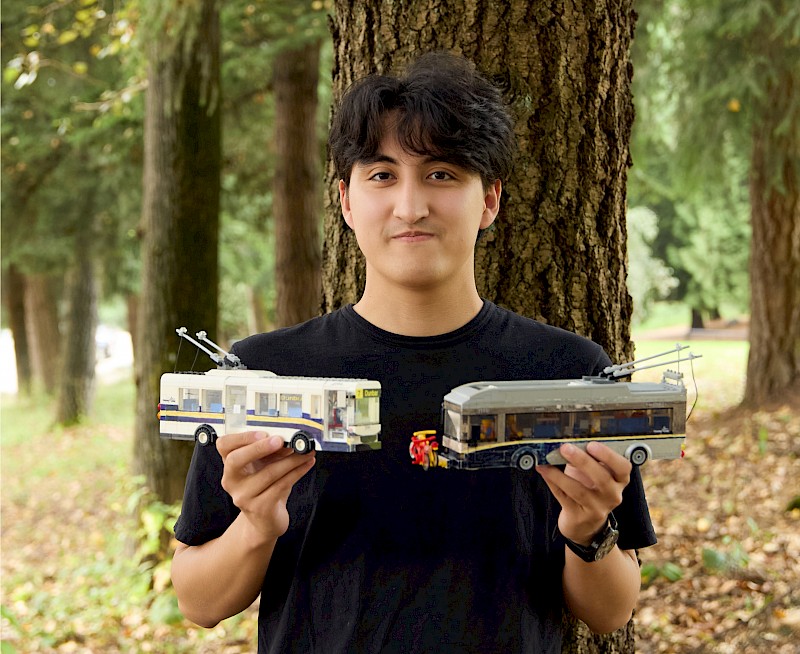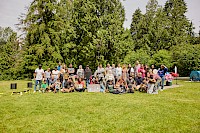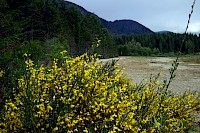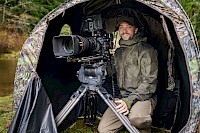BC Parks Foundation
Next Stop Nature: How Being Healthy By Nature Led to an Obsession with Transit and Amazing LEGO® Creations
August 28, 2024
Next Stop Nature: How Being Healthy By Nature Led to an Obsession with Transit and Amazing LEGO® Creations
Growing up without a car, Kai Bowes developed a deep appreciation for public transit, and particularly for the buses that carried him and his mother to the heart of nature.
As a child, he didn’t fully understand how taking the bus to the outdoors would significantly benefit his health, but today he understands that these early experiences laid the foundation for lifelong well-being, and to his work as a team member at BC Parks Foundation.
Next Stop: Nature
Kai’s fascination with mass transportation began at the age of five, as he started noticing the unique features of the different buses carting him around the Lower Mainland.
He studied TransLink’s fleet, memorizing models and their distinctive features. His early interest accelerated into a unique hobby: crafting LEGO® replicas of TransLink vehicles. So far, he’s made more than 12 unique replicas.
His childhood rides to Lynn Canyon Park aboard the New Flyer C40s with their underfloor fuel tanks (different from the New Flyer E40LFs that he rode downtown) were particularly exciting, both for the novelty of the bus model and the vibes onboard.

Kai recalls guessing which fellow passengers would get off at the same stop. Maybe a tourist would ask his mother for walking directions. A child might strike up a conversation with Kai. Then the group of happy park visitors would head in the same direction together. They’d brave the wobbly bridge, walk peaceful nature trails, and soak up the sun by the tidal pool.
“My mom always says the air is better in a park, and she just wanted to breathe it in,” says Kai.
And she isn’t wrong—research shows that air quality in parks is significantly better than in urban areas, with lower levels of pollutants and a higher concentration of oxygen, which can have positive effects on both mental and physical health.
Journey to Wellness
Kai’s appreciation for nature has only deepened over the years. His mother, too, remains an avid nature enthusiast, often joining Kai on visits to parks like Lynn Canyon, Pacific Spirit Park, and Dr. Sun Yat-Sen Classical Chinese Garden.
Even though they now have access to a car, Kai and his mother always opt for public transit. “Our health and our planet are both incredibly important,” Kai says. “We want to protect them both.”
Kai believes the social experiences on the bus rides, like chatting with fellow passengers or sharing a moment of excitement, contribute to a sense of community and belonging, which is also known to boost mental well-being and reduce feelings of loneliness.

This blend of social and physical activity, reduced stress, and exposure to green spaces creates a formula for improved overall personal and planetary health.
In Kai’s case, it has also created a formula for a very creative and challenging hobby, which contributes even more to his well-being through its meditative nature. “You lose track of time when you’re working on it,” says Kai. “It’s spontaneous and relaxing.”
That’s a lot like going on a walk, hike, paddle or ride in a park. When you enjoy not only the destination, but also the journey to get there, you are transported to the best place of all—a feeling of relaxation, peace and joy.
Visit these transit-friendly parks in the Lower Mainland for your health: White Pine Beach and təmtəmíxʷtən/Belcarra Regional Park, Stanley Park, Burnaby Mountain Conservation Area, Lighthouse Park, Grouse Mountain, Pacific Spirit Park, Buntzen Lake, Crystal Fall Trails.
Learn about PaRx and why, more and more, nature prescriptions are just what the doctor ordered.
Love this? For more inspiring stories about conservation wins, community efforts, and ways you can help protect nature, subscribe to our newsletter today.
Similar Stories
-
 March 24, 2025
March 24, 2025
You Helped BC Parks Foundation Win an International Award for Sustainability
-
 February 25, 2020
February 25, 2020
Alien Invasion: 10 Invasive Species Found in B.C.'s Parks
-
 June 13, 2024
June 13, 2024
Appreciating a BC Parks Foundation Champion
“Look deep into nature, and then you will understand everything better.
”